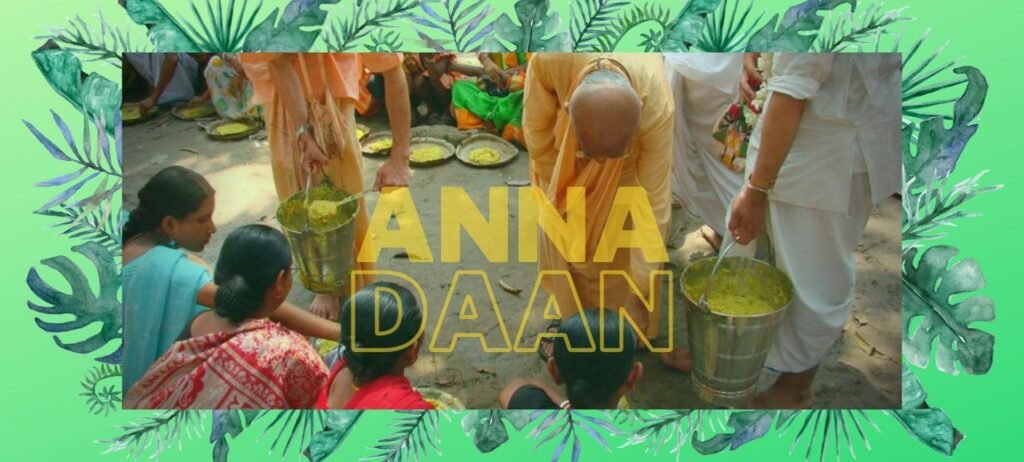
The auspicious day of Makar Sankranti, which falls in the Krishna paksha of Magha maas (month of January), is considered a very auspicious day, and marks the entering of the sun into the sign of Capricorn or ‘Makar’.
Importance of Makar Sankranti
Lord Surya on His dazzling chariot, that has thousands of spokes and magnificent wheels, and is driven by seven horses (seven colours of the spectrum) begins His journey northward into the Makara Rasi on this day, filling our lives with light and getting rid of the darkness. This light not only fills our material life and helps our plants grow at seeding time, but also gets rid of our “internal” darkness, showing the path of self-realisation. Makar Sankranti is of special importance, as it marks the beginning of the auspicious six month period of Uttarayan.
Celebrations on the day of Makara Sankranti (Local Traditions)
a. Special Dishes: On this day, devotees prepare a dish made of green grams, rice and jaggery (sarkkarai pongal) – representing Lord Narayana, Laxmi and Their Divine love. The festival reminds us that we need to establish that Divine Love within ourselves and give a direction to this “chanchala buddhi” and fix it our Lord Narayana, who brings light in our lives. Sesame oil is used in making sweets and dishes, particularly on this day. It is believed that sesame seeds are used for purificatory purposed (or as being auspicious – “tila juhomi sarasaagum sapishhthaam gandhaara mama chitteramanutu swaaha”, “tila krishnaa tila shevataa tila saumyaa vashaanugaa”…)
b. Celebration of the new harvest: This same festival is celebrated as Pongal in the South of India. Harvest is brought home, the new rice is then boiled in milk to make the sweet called “chakrapongali”, the special cuisine of the eve. This harvest festival is celebrated for 3 days. The delicacy is first offered to Sun God, the chief deity under worship, that is later distributed to all as prasadam. The harvest is celebrated as being blessed with Dhanyalakshmi and a splendid feast is shared by all after the Ishta Devatha pujas.
c. Flying Kites – kites are seen soaring high in the sky on the day of Makara Sankranti. This is symbolic of the existence of mankind, with the kites depicting the human lives and the manza depicting the eternal bond between us and the divine self.
d. Gobbemmalu – Young girls are seen to put up Gobbemmalu, round balls of cow dung that are decorated with vermilion, turmeric and coloured flowers. These are placed in the middle of the bright muggus in the front yards of the dwellings and are worshipped with Navadhanyas (nine types of grains) to welcome the Lakshmi, the Goddess of abundance and prosperity. Spinsters worship for good husbands on the occasion. After this, the women folk get gathered to sing and dance to the accompaniment around these gobbis.
e. Other celebations: Many traditional folk forms add glory to the festive scenario. Haridasulu are seen singing eulogies of the Almighty and seeking arms from the people in the early hours of the days. Gangireddu Ata, is another festival where trained oxen dance to the tunes of the Nagaswaram played by their master is a great attraction.
OFFER YOUR SEVA !!

ARCHANA REFERS TO THE RECITAL OF VARIOUS NAMES OF LORD AND SEEKING HIS DIVINE BLESSINGS FOR THE PROSPERITY OF THE ENTIRE HUMANITY.

IN THE VARAHA PURANA, LORD VARAHA SAYS, “ONE WHO GIVES FOOD (PRASADAM) AS CHARITY, GIVES ALL THAT IS WORTH GIVING IN THIS WORLD”
SCAN & PAY WITH ANY UPI APP

DIRECT BANK NEFT/RTGS/IMPS
ISKCON Account Details:
Name of account: ISKCON
A/C # 042494600000441
IFSC Code: YESB0000424
YES Bank Abids Branch.

Kindly drop us an email at iskconhyddonations@gmail.com with
your Name, Address, Contact# and PAN#, once your transaction is done.
Contact for donations:
Email: iskconhyddonations@gmail.com
Mobile: +91 9182822719
